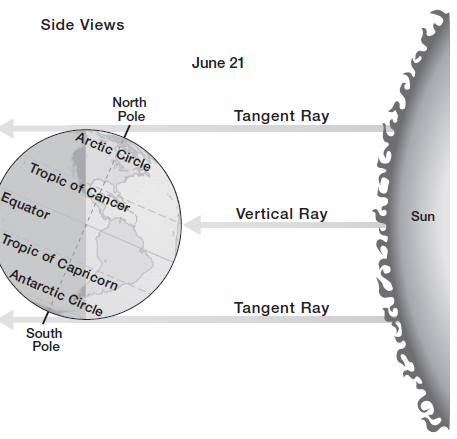Why does the equator receive equal day and night?

Figure 9-2: Earth–Sun relations on June solstice.
Noting the orientation of the circle of illumination on June 21, explain the above question.
What will be an ideal response?
The circle of illumination bisects equator (half of equator is in daylight).
You might also like to view...
________ is not part of the hydrologic cycle.
A) Water infiltrating into the soil and bedrock B) Water evaporating from a lake C) Calcium carbonate dissolving in soil water and groundwater D) Water moving into creeks and streams following a rainstorm
Which of the following pairs do not engage in hydrogen bonding?
A) H2O with NH3 B) H2O with H2O C) NH3 with NH3 D) None, they all engage in hydrogen bonding.
Which of the following can be characterized as a strong acid?
A) 0.001 M HCl B) 3.0 M HCl C) both a and b D) neither a nor b
Which part of the beach includes the area between the high- and low-tide shorelines?
A. Coastline B. Foreshore C. Backshore D. Offshore E. Berm